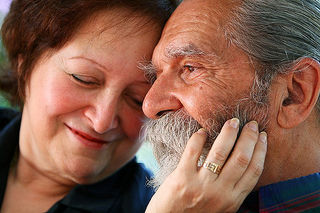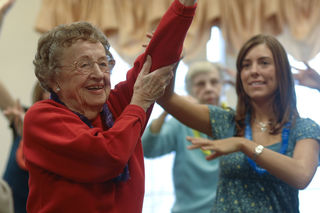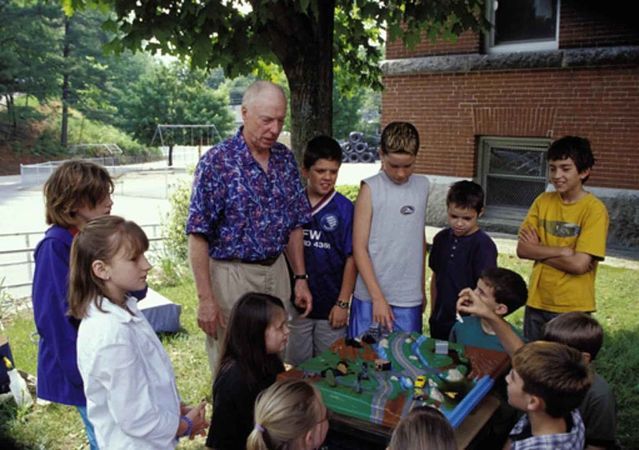Resilience
Aging, Resilience, and The New Normal
It's amazing what you can still do.
Posted April 4, 2017
Recently I had the opportunity to attend a conference in Santa Fe, New Mexico, dealing with the issue of Resilience. I was there for two reasons, first because I love Santa Fe with its abundance of art and good restaurants. Second, I was there to pick up continuing education credits, which every licensed psychologist in the state of California is required to do. I was delighted to come away from the conference not only having eaten wonderful food, seen exquisite art, and with 18 units of CE Credit, but also with a better understanding of the term Resilience and the implications of that term for older adults.
If one does an online search for the term Resilience, many definitions emerge.
Resilience is that ineffable quality that allows some people to be knocked down by life and come back stronger than ever. (Psychology Today)
Resilience is the process of adapting well in the face of adversity, trauma, tragedy, threats or significant sources of stress — such as family and relationship problems, serious health problems or workplace and financial stressors. It means, "bouncing back" from difficult experiences. (APA)
Resilience is the capability of a strained body to recover its size and shape after deformation caused especially by comprehensive stress; an ability to recover from or adjust easily to misfortune or change. (Merriam Webster)
Let me add one of my own.
Resilience is an ongoing process of responding to adversity with concerted action. It is not focused on a specific goal, but a way to help the impacted individual move forward.
Quite a mouthful, eh? But at its most basic, those seen as resilient tend to approach problems in an action-oriented way. In an earlier blog, I wrote about Recovering from Injury or Illness (Shaevitz) by concluding that while healthcare professionals can assist, the degree of recovery after an illness or injury is dependent upon individual action. Unfortunately, some took that to presume that recovery meant getting back to where you were before the illness or injury occurred, and found themselves distressed that they had not “fully recovered.”
That was not my intent. So now, let me introduce a concept particularly applicable to older adults, The New Normal.

Health and The New Normal - For those over 65, The New Normal is that you will be dealing with one or more chronic conditions such as diabetes, cardiovascular disease, arthritis, or orthopedic problems and will be taking an increasing number of prescription drugs. An AARP study in 2005 reported that those over 45 took an average of four prescription medications per day. As one moves into their 60s, 70s, or 80s, that number will increase. However, most older adults will continue to be able to live full and active lives, be with family and friends, and participate in a number of activities.
How one copes with these health concerns is partially dependent upon attitude and action, i.e. Resilience. It means making good choices with regard to food, physical activity, and maintaining relationships. It doesn't mean that you can ultimately be cured or fully restored. The definition of chronic is exactly that - something that tends to stick around. However, it's one's response that is most important. The New Normal is that many of us will be dealing with an increasing number of medical problems, but will be living full and active lives.
Sex and The New Normal - most older adults are sexually active into their 60s, 70s, and even 80s. In many instances, the lack of sexual activity is not due to the lack of interest but the availability of an appropriate partner. Yes, it does tend to be a difference that is linked to gender with more men than women being sexually active as they age. Again, this may be due to opportunity. However, it's going to be different as you age.
The New Normal means that most men will need to be addressing their erectile dysfunction by taking prescription medications. Many women will need to be addressing issues of pain during intercourse due to vaginal dryness and will need to discuss this with their health care provider.

Intimacy, holding, touching, and being willing to experiment with multiple ways of being sexual can increase pleasure for both men and women. However, comparing yourself to what was normal when you were 20 or 30 is simply unrealistic. The New Normal for sexuality is a focus on closeness, as well as pleasure, curiosity, novelty, and persistence.
Cognitive functioning and The New Normal - yes, you're likely to lose your keys more often than you did when you were younger. And you may also have more difficulty in recognizing faces, have a slight decrease in short-term memory, and what neuropsychologists call Mild Cognitive Impairment. That is The New Normal. And yes, the frequency of mild cognitive impairment, dementia, and Alzheimer's Disease increases with age. At age 65, 17% of women and 9% of men are at risk of developing Alzheimer’s Disease, by age 75 this is increased to 19% of women and 10% of men, and by 85 to 20% of women and 12% of men (Alzheimer’s Association). What this means, however, is that the majority of older adults can expect to have normal cognitive functioning until they die (Alzheimer’s Association).
Exercise and The New Normal - okay, while I recently read a story about a man of 105 who was still cycling, the reality is that certain types of orthopedic conditions will naturally limit the likelihood of most older adults participating in triathlons. Being sedentary is not only a problem for older adults but for the vast majority of the US population. However, for older adults, the lack of physical activity dramatically compounds the challenges of aging.

Over the years in my writing, consulting, and public speaking, I focused on helping individuals (and organizations) change and grow. In doing this, however, I have avoided being prescriptive. The one area in which I plead guilty of being more directive is in the area of physical activity. If I were able to get every person over 65 to commit to a five or six-day walking program (or the equivalent), the health care system would save millions of dollars, quality of life for those engaged would increase, and a number of chronic health problems would be helped. Unfortunately, too many people become emotionally hijacked, that is allowing their feelings to determine their behavior. As one man said to me recently,
"Hey Doc, if I was feeling better I would get out there and walk every day!"
My response? “If you were to get out there and walk every day, you'd be feeling better."
So, I'm urging the readers of this blog to break free of their excuses, avoidance, denial, and resistance!
Get your butt out of bed and go take a walk. And that's the minimum for your New Normal.
Social isolation and The New Normal - one thing that inevitably occurs as we age is that those who we depend upon are aging, too. What that means is: friends get ill and pass on, spouses die, our physicians retire, our children and grandchildren may be scattered all over the country, and we lose the ability to be easily connected with others. The consequences of social isolation include poor health, depression, and an overall decline in quality of life.
Fortunately, there are a number of things that older adults can do to address this. Many colleges and universities offer no-cost or very low-cost opportunities for older adults to be with others in a learning environment. Retirement communities know that many older adults lack the economic wherewithal to move to some type of community, or simply want to live independently. So "at-home programs" that reach out via caregiving, and technology connecting older adults who are living alone, are being developed.

So, The New Normal for older adults is to be actively engaged in the world, via personal mobility, planned activities, or technology. In a recent blog on Geriatric Technophobia (Shaevitz), I pointed out the consequences of not being computer literate, frightened of smart phones, and even choosing a car’s safety features provided there’s a pathway to competence. By the way, for those who resist traveling because public transportation is limited or they are no longer able to drive, the revolution in individual transportation service, exemplified by companies like Uber or Lyft, provide increased mobility at a relatively low cost.
Don't be alone. Don't, don't, don't!

Work, productivity, engagement and The New Normal – when Ken Blanchard and I wrote Refire, Don't Retire, we were struck by the large number of middle-aged adults who found the message of interest, and that the ideas seem to be resonating internationally with the publication of foreign editions. So many things are changing. A significant number of older adults are working well into their 60s, 70s, and even 80s. For some, it's partially a matter of economic need but for many others, it’s a way to be engaged, challenged, and living a life of meaning and significance. So The New Normal is not necessarily being given a goodbye party and retiring at 65. For many, it’s finding a new passion and moving from success to significance.
Here are some examples of my own:
My New Normal is as follows: As a result of my back surgery, I'm not quite where I was before I had my surgery. Therefore, I no longer ski because the risks of a fall are too great. Nor do I ride a bicycle, although I'm thinking that I'll give a step-through bike a try. I approach escalators, particularly with carry-on luggage cautiously, but so far, so good. Because "misplacing" my keys and/or smart phone was so distressing, I got "Tile," so I can push a button, hear a ring, and find the missing object.
On the other hand, I take long walks either on the beach or in my neighborhood five times a week. I was able to get from one terminal to another at the Dallas airport in less than 15 minutes. I use my stationary bicycle at least 30 minutes a day, while reading a magazine, book, or newspaper. I still go to the gym a few days a week, and continue to work on balance and staying physically strong. I take a few medications regularly. I'm still productive, but try to have my weekends start on Thursday morning and end on Monday evening. At a recent talk I gave, I asked every man over 65 who could sleep a full night without having to get up at least once to go to the bathroom to raise his hand. Out of the group of almost 100 attendees, only two men raise their hands – and I was not one of them.
I keep my focus on all of the things that I can do and feel good about.
That is my New Normal!
I invite the readers of this blog to give me some examples of your New Normal.




